
Why Gonzaga’s Early-Season Games Could Make or Break Their Championship Dreams
When it comes to Gonzaga, the spotlight on their non-conference basketball schedule is as glaring as ever — and for good reason . Unlike many of their powerhouse peers in the big leagues, the Zags find themselves walking a razor-thin line where every early-season game carries the weight of the entire tournament résumé . The West Coast Conference just doesn’t toss many marquee wins their way past January, so the gauntlet is thrown down hard from the jump: November and December games aren’t just warm-ups; they are the proving grounds. With a brutal lineup awaiting them in 2025–26 — think face-offs against Alabama and Maryland at the Players Era Festival in Vegas, and heavy-hitters like Kentucky, UCLA, and Oregon looming later in the calendar — Gonzaga’s chances to claim a cushy March seed hinge almost entirely on these showdown moments. Last year’s slip-ups? They still sting. Dropping key matchups early had the Zags pegged as an eight seed, sending them into a nightmare rematch against Houston that clipped their wings fast. This season, the stakes couldn’t be higher, and the margin for error is paper-thin. These games aren’t just contests; they’re the very measure of whether Gonzaga crashes or cruises come tournament time .

For Gonzaga, the non-conference calendar matters more than it does for almost any other perennial tournament contender, because the West Coast Conference offers few opportunities to impress the selection committee once January begins, which means that every November and December matchup shapes the résumé far more than the efficiency metrics that place the Zags among the nation’s offensive elite, and in 2025–26 those matchups arrive in bulk, with guaranteed dates against Alabama and Maryland at the Players Era Festival in Las Vegas, potential follow-ups against other national powers from that loaded field, and high-profile stages against Kentucky, UCLA, and Oregon, all of which combine to determine whether Gonzaga carries a protected seed into March or repeats the path of last year’s team, which dropped too many of its early tests, landed on the eight line, and had to face a top-seeded Houston juggernaut in the second round that ultimately ended its season.
The selection committee’s framework places Gonzaga’s non-conference results under intense scrutiny: only home opponents within NET ranks 1–30 qualify as Quad 1, neutral-site wins against the top 50 qualify, and road victories count up to the top 75. Postseason seeding thus hinges on a few marquee early games, unlike teams in power conferences that accumulate Quad 1/2 wins consistently. Despite Gonzaga ranking 8th in KenPom’s adjusted efficiency margin (Net Rating) with a +28.01 and possessing the nation’s second‑best adjusted offensive rating in preseason projections (116.1), that firepower was undercut last season by a weak non-conference résumé—just 1 win over a Quad 1 opponent, which contributed to being seeded 8th and drawing top-seeded Houston in the second round. The math is unambiguous: scoring efficiently doesn’t flip seeding unless paired with signature non-conference victories.
Here’s a Quad projection breakdown for Gonzaga’s 2025–26 non-conference slate, based on recent NET cut lines, team strength, and location effects:
Non-Conference Quad Projections — With Preseason Data
Tier One: Anchor Games (Quad 1 locks or near-locks)
- Alabama (Neutral, Las Vegas, Nov 24)Preseason KenPom ranks Alabama #6 with a +30.34 efficiency margin, plus the #1 adjusted offensive rating in the country, making them a Quad 1 anchor nobody will downplay.
- Maryland (Neutral, Las Vegas, Nov 25) SEC returners and roster continuity put the Terps in the preseason top‑25 range across composite polls. That places them safely in the Quad 1 bracket.
- Players Era Day‑3 Opponent (Nov 26) — Potential foes include Houston, Kansas, Oregon, Tennessee, Baylor, Creighton, Michigan, San Diego State, Auburn. All of these teams currently project within the Quad 1 net if Gonzaga reaches this round. Notably:
- Oregon — Finished the previous season ranked #27 in KenPom with a +21.85 mark, a proven neutral-court threat.
- Baylor (#30), Kansas, Houston, Tennessee, Creighton — all crowd the preseason top‑30–40 composite lists, solid Quad 1 credentials.
- Kentucky (Neutral, Nashville, Dec 5) Preseason composite rankings consistently slot Kentucky in the top‑10 nationally, making them a Quad 1 heavyweight.
- UCLA (Neutral, Seattle, Dec 13) Again, preseason polls (composite top‑15) and conference pedigree put the Bruins in solid Quad 1 territory.
- Oregon (Neutral, Portland, Dec 21) As noted, Oregon’s efficiency metrics and recent performance (including a PEF Championship) support a Quad 1 classification.
Tier Two: Insurance Games (Quad 1/2 swing opportunities)
- Creighton (Home, Nov 11) Pre‑season under Boulder composite rankings place Creighton in the top‑25, but playing at home caps them at Quad 2 unless they crack the NET top‑30.
- Oklahoma (Neutral, Spokane Arena, Nov 8) Early projections peg Oklahoma in the top-50 zone, which would make a neutral-site win Quad 2, but a NET slip inside top-50 would elevate it to Quad 1.
- Arizona State (Road, Nov 14) A road location amplifies their profile. If ASU holds inside the NET top-75, this becomes Quad 1; otherwise, it sits in Quad 2.
Tier Three: We Better Win These Games (Quad 3/4)
- Texas Southern (Home, Nov 3) A SWAC opponent with a modest resume – Quad 4.
- Southern Utah (Home, Nov 17) Similarly low NET placement makes this a Quad 4 fixture.
- Campbell (Home, Dec 17) Quad 4, no margin for slip.
- Western Oregon (Oct 27 Exhibition) Not NCAA-eligible for Quad projections… a pure tune-up.
Why This Matters for Gonzaga’s Résumé
For most power-conference programs, the committee’s quadrant system rewards sheer volume. A Big 12 or SEC team can stumble in November and December, then stack ten or more Quad-1 wins simply by surviving league play. Gonzaga has no such cushion. Once January begins, the West Coast Conference produces at most two or three games that qualify as Quad-1, usually trips to Saint Mary’s or San Francisco. The rest of the slate lives in Quad-3 or Quad-4 territory, which means that a résumé built on overwhelming offensive efficiency but lacking headline wins gets flattened against teams with deeper schedules.
That reality explains why last year’s WCC Tournament championship carried little weight. Gonzaga entered Selection Sunday with a top-10 KenPom offense and yet only a single non-conference Quad-1 victory, and the committee left them on the eight line. From that position the Zags were funneled straight into a second-round matchup with top-seeded Houston, which ended their season before the second weekend. The metrics said Gonzaga was dangerous; the résumé said they had not beaten enough teams that mattered. The committee trusted the résumé.
This season offers more opportunities but also higher stakes. The Players Era Festival alone guarantees two, and probably three, Quad-1 chances, and December layers on Kentucky, UCLA, and Oregon. That’s the kind of non-conference volume Gonzaga has lacked in recent years, but it also means the Zags cannot afford a repeat of last season’s pattern, when they dropped winnable games early and left themselves with no path to repair. Each November and December result functions like a lever: win enough to stack three to five Quad-1s before league play, and Gonzaga secures a protected seed; fall short, and even an undefeated WCC slate might only hold the line at a four or five.
Saint Mary’s lingers as the one potential exception. If the Gaels prove to be a top-25 team and Gonzaga dominates them head-to-head, that could buoy the résumé and soften the damage from one or two non-conference losses. But if Saint Mary’s stumbles and the rest of the league remains outside the top-75, the Zags are right back in the familiar bind: every meaningful piece of their profile must come before Christmas. That is why the non-conference schedule matters so much more for Gonzaga than it does for their peers.
The path to a protected seed is straightforward but unforgiving. A 3-0 sweep in Las Vegas, paired with two wins from Kentucky, UCLA, and Oregon, would leave Gonzaga with five Quad-1 victories before Christmas, the kind of résumé that (typically) locks a place on the two line and builds margin for error in WCC play. Even a 2-1 festival record, if combined with one or two marquee wins in December plus decisive wins against Creighton, Oklahoma, and Arizona State, sets the Zags up comfortably on the three or four line. The key is stacking multiple neutral-site wins, because the committee has shown again and again that those games carry more weight than dominant home efforts.
The floor is just as clear. Go 1-2 in Las Vegas and then lose two of the December anchors, and Gonzaga enters January with only one or two Quad-1s on the sheet, a profile that slides quickly toward the five or six line. Add a conference slip against a Quad-3 or Quad-4 opponent (as the Zags did last year), and the résumé collapses into the seven-to-nine range. In other words, November and December don’t just shape Gonzaga’s seed ceiling, they determine whether the committee even sees this roster as the same national contender the numbers insist it is.
For Gonzaga, the lesson is as stark as it is familiar: the committee will not reward gaudy offensive metrics or another WCC trophy unless those numbers are paired with signature victories before Christmas, which means the Players Era Festival and the December blue-blood tour aren’t side plots to the season but the season itself, the stretch that will decide whether the Zags are seeded as a contender or slotted once again into the landmine range of the bracket, and while Saint Mary’s could offer some late ballast if the Gaels are strong, the clearest path forward is to leave November and December with a résumé that speaks for itself.
Gonzaga’s challenge, then, is less about proving whether the roster can score or defend at an elite level—history has shown they can—and more about timing, about stacking the right wins in the right windows so that by March the résumé reflects the program’s actual quality. That means Las Vegas in November, Nashville in early December, and Seattle and Portland just before Christmas are not merely games on the schedule, but checkpoints that will define the season’s trajectory. Handle that stretch with conviction, and the Zags enter March as a protected seed with the bracket path of a contender; falter, and they are left hoping once again that dominance in a diminished WCC can paper over the gaps.








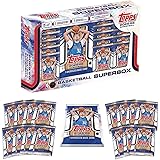
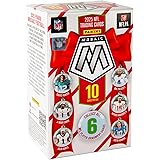
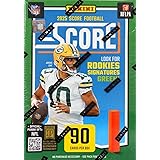
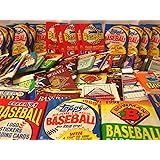

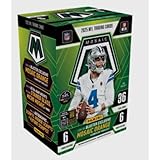

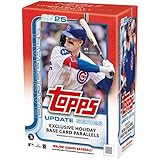
















Post Comment